Japan is world-renowned for its precise joinery, minimalist aesthetics, and timeless woodworking techniques. Whether you’re a beginner or an experienced maker, Japan offers unique opportunities to dive into the heart of traditional and modern woodworking.
Below is a curated list of woodworking schools and workshops across Japan—each offering a distinctive learning journey.
1. Suikoushya International Craft School – Kyoto
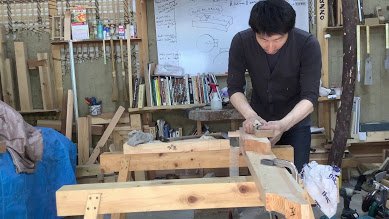
Explore the art of traditional Japanese carpentry (miyadaiku style) at Suikoushya International Craft School.
- Style: Traditional Japanese joinery
- Language: English
- Location: Kyoto, Japan
- Program Highlights:
- Learn to make joinery without nails or screws
- Use traditional hand tools like kanna (planes) and nokogiri (saws)
- Classes from 1 week to 3 months
- Ideal for: Beginners to experienced woodworkers
- Special Note: Personalized instruction from master craftsman Youhei Sano
2. Soma Kosha School – Kyoto
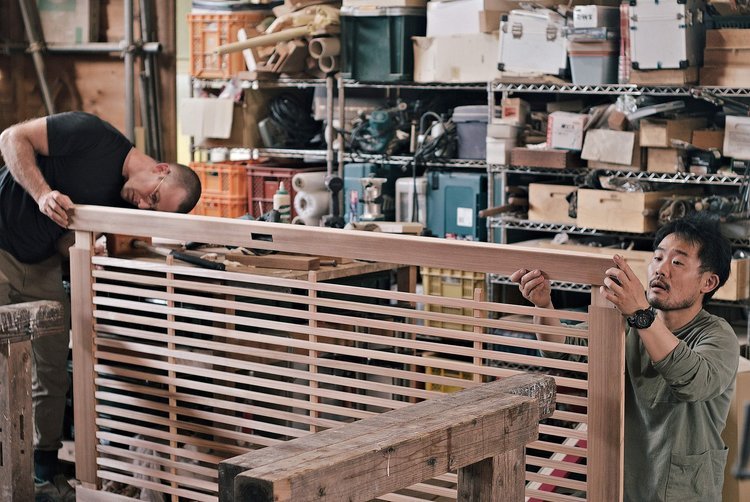
Blending contemporary design and traditional craftsmanship, Soma Kosha School offers an immersive woodworking experience.
- Style: Contemporary woodworking with traditional roots
- Language: English-friendly
- Location: Kyoto, Japan
- Program Highlights:
- Learn design, joinery, and hand tool techniques
- Build full-scale furniture pieces
- Courses range from short-term workshops to long-term training
- Ideal for: DIY enthusiasts, hobbyists, and design professionals
- Special Note: Emphasizes sustainability and deep respect for wood
3. Acroge Furniture School – Tokyo
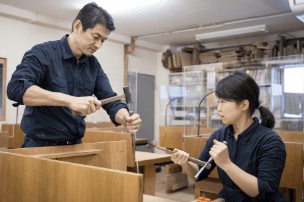
Located in Tokyo, Acroge Furniture School teaches modern furniture-making techniques with professional equipment.
- Style: Contemporary furniture making
- Language: English and Japanese
- Location: Tokyo, Japan
- Program Highlights:
- One-day to multi-month courses
- Furniture building and restoration techniques
- Access to professional tools and machinery
- Ideal for: Urban-based creatives and those wanting to try woodworking in Tokyo
- Special Note: Offers flexible scheduling for casual learners
4. Never Stop Building – Tokyo
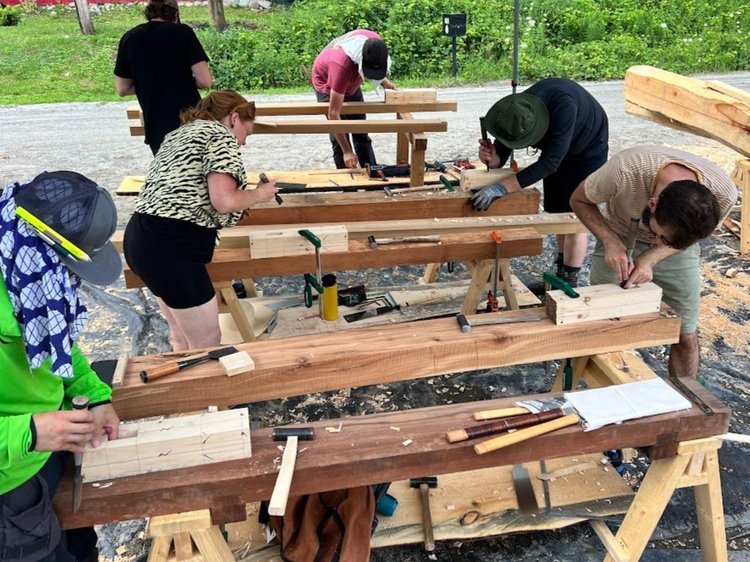
Perfect for first-timers and families, Never Stop Building offers fun and accessible woodworking workshops.
- Style: DIY and creative woodworking
- Language: English
- Location: Tokyo, Japan
- Program Highlights:
- Hands-on workshops for beginners
- Build items like stools, cutting boards, and benches
- Focus on fun, safety, and creativity
- Ideal for: Expats, tourists, and kids
- Special Note: Great for family activities and team-building events
5. Kitewa Woodworking Studio – Gifu
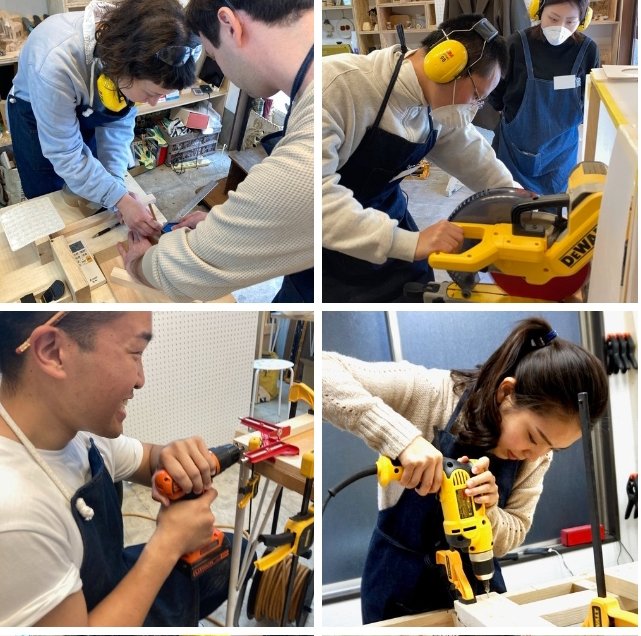
Experience slow living and mindful craftsmanship at Kitewa, a woodworking studio tucked in Gifu’s natural surroundings.
- Style: Natural and rustic woodworking
- Language: Japanese (inquire for English support)
- Location: Gifu Prefecture
- Program Highlights:
- Small group sessions in a peaceful rural setting
- Use of local Japanese wood
- Emphasis on craftsmanship and mindfulness
- Ideal for: Nature lovers and those seeking a slower pace of learning
- Special Note: Offers stays at a traditional guesthouse nearby
Comparison Table
| School | Style | Language | Location | Best For | Duration |
|---|---|---|---|---|---|
| Suikoushya | Traditional joinery | English | Kyoto | All levels | 1 week – 3 months |
| Soma Kosha | Design-focused | English-friendly | Kyoto | DIY & designers | Short – Long term |
| Acroge Furniture | Contemporary | English & Japanese | Tokyo | Urban creatives | 1 day – few months |
| Never Stop Building | DIY workshops | English | Tokyo | Beginners & families | Few hours |
| Kitewa | Natural style | Japanese | Gifu | Mindful learners | Varies |
Why Learn Woodworking in Japan?
- Deep Craft Culture: Japanese woodworking is centuries-old, focused on precision, patience, and respect for the material.
- Master Instructors: Many schools are led by artisans with decades of experience.
- Hands-On Practice: All programs are immersive and tool-based—no passive lectures.
- Cultural Insight: Learn about Japanese values like wabi-sabi (beauty in imperfection) and monozukuri (making things with spirit).
Tips for Booking
- Language: Most international-friendly schools offer courses in English or provide translators.
- Visa: Short-term visitors can usually attend workshops without a visa, but longer programs might require proper documentation.
- Tools & Materials: Most schools provide them, but you may want to invest in your own hand tools for continued practice.
- Accommodation: Some schools offer stays or can recommend nearby lodging.
Start crafting your journey in Japan today. Whether you’re fascinated by Japanese joinery or simply love the smell of freshly cut wood, these schools offer the perfect environment to grow your skills and connect with a timeless tradition.
- Woodworking Classes in Chicago
- Woodworking Classes in North Carolina
- woodworking class cincinnati
- woodworking classes dallas
FAQs
What types of woodworking classes are available in Japan?
Japan offers a diverse range of woodworking classes, from traditional hand tool carpentry to modern furniture making and CNC machining. Classes cater to all skill levels, whether you’re a beginner hoping to craft your first wooden spoon or an advanced learner aiming to master joinery techniques like kumiko or sashimono. Some schools also specialize in Japanese temple carpentry, while others focus on Western-style furniture making, giving learners the option to explore both cultural techniques.
Are woodworking classes in Japan suitable for beginners?
Absolutely. Many woodworking studios and schools in Japan welcome beginners with open arms. In fact, several programs are designed specifically for those with no prior experience. These beginner-friendly classes typically cover basic safety protocols, tool handling, and simple projects like boxes, trays, or cutting boards. Instructors often guide students through each step with patience, ensuring that everyone learns at a comfortable pace.
How long do woodworking classes typically last?
The duration of woodworking classes in Japan varies widely depending on the type of program. You can find short one-day workshops, weekend intensives, and even multi-month certification courses. Some studios also offer ongoing weekly classes where you can progress through projects at your own speed. For travelers, shorter classes are ideal, while longer courses are better suited for residents or those on extended stays.
Are classes taught in English?
While the majority of woodworking classes in Japan are conducted in Japanese, there is a growing number of schools and workshops that offer instruction in English or provide English-speaking assistants. Cities like Tokyo, Kyoto, and Osaka are more likely to have English-friendly options due to their international communities. However, even in Japanese-speaking classes, visual instruction and hands-on practice make it possible to follow along.
What tools and materials are used in Japanese woodworking classes?
Japanese woodworking emphasizes precision and craftsmanship, often using hand tools like pull saws (nokogiri), chisels (nomi), and planes (kanna). Students usually work with local wood such as hinoki (Japanese cypress), keyaki (zelkova), and sugi (cedar). Many schools provide these tools and materials as part of the class fee, but students can also bring their own if preferred.
How much do woodworking classes in Japan cost?
Costs vary depending on the length, location, and prestige of the class. A single-day workshop might cost between ¥5,000 to ¥15,000 ($35–$100), while intensive courses can range from ¥50,000 to over ¥200,000 ($350–$1,400). Classes taught by master artisans or in historic locations may carry a premium, but many learners find the experience well worth the investment.
Do I get to keep what I make in the class?
Yes, most woodworking classes in Japan allow you to keep your handmade creations. Whether it’s a small accessory, a furniture piece, or a carved ornament, students usually walk away with a tangible souvenir of their efforts. Some studios also offer gift wrapping or shipping options for those traveling from abroad.
Can I take woodworking classes as a tourist?
Certainly. Many workshops in tourist-friendly areas like Kyoto, Kanazawa, and Tokyo offer short-term classes designed specifically for travelers. These typically run for a few hours and focus on crafting items like chopsticks, trays, or coasters. They’re a great way to immerse yourself in Japanese culture while creating a unique keepsake.
Are there woodworking classes for kids in Japan?
Yes, several woodworking studios offer kid-friendly workshops. These are usually simplified for safety and fun, involving projects like toy making, birdhouses, or puzzle games. Parental supervision may be required depending on the age group, and tools are either child-safe or used under close instructor guidance.
What is the difference between Japanese and Western woodworking techniques?
Japanese woodworking is known for its intricate joinery, use of hand tools, and absence of nails or screws in many projects. It emphasizes harmony with nature, precision, and minimalist aesthetics. In contrast, Western woodworking often relies more on power tools, adhesive bonding, and different construction methods. Taking a class in Japan gives students a unique opportunity to appreciate the quiet elegance and discipline of traditional Japanese craftsmanship.
Do I need to bring my own tools?
In most cases, no. Schools typically provide all necessary tools and safety equipment, especially for short-term classes. However, if you’re enrolled in a long-term or professional course, you might be encouraged to invest in a personal tool kit. Some schools even have on-site shops where you can purchase high-quality Japanese tools.
Are certification courses available?
Yes, there are several vocational schools and technical colleges in Japan that offer certified woodworking programs. These range from beginner to advanced levels and may cover traditional joinery, carpentry, furniture design, or wood sculpture. Some programs lead to official recognition by local guilds or professional associations.
Can I learn traditional Japanese joinery techniques?
Definitely. Many woodworking schools in Japan offer specialized training in traditional joinery, including mortise-and-tenon, dovetail, and kumiko patterns. These techniques require time and precision but are deeply rewarding. Learning these skills directly from experienced Japanese artisans adds an extra layer of cultural richness.
Are there online woodworking classes based in Japan?
Yes, a few Japanese woodworking schools and craftsmen have adapted to the digital age by offering online classes and video tutorials. While not as immersive as in-person experiences, online courses can still teach core skills and are ideal for international students who can’t travel. Some classes even ship the materials and tools to your door.
What should I wear to a woodworking class?
Comfortable, durable clothing is best. Avoid loose sleeves, jewelry, or anything that might get caught in tools. Closed-toe shoes are a must, and long hair should be tied back. Many studios provide aprons or dust coats, but it’s a good idea to wear clothes you don’t mind getting dusty.
How do I find woodworking classes in Japan?
You can find classes via websites like Airbnb Experiences, local craft centers, vocational schools, or by searching terms like “木工教室 (mokkou kyoushitsu)” or “woodworking workshop Japan.” Travel blogs and expat forums also frequently share personal recommendations.
Are private one-on-one woodworking lessons available?
Yes, some master craftsmen and boutique studios offer private lessons, allowing for tailored instruction and flexible scheduling. These can be more expensive but offer a deeper learning experience. If you’re serious about refining your skills or working on a personal project, this is a great option.
Can I take home woodworking tools as souvenirs?
Certainly. Japan is known for producing some of the world’s best hand tools, and many woodworking students take home saws, chisels, or planes as both souvenirs and functional equipment. Specialty stores like Toshiyasu in Tokyo or Hidaka Tool Shop in Kyoto offer authentic, high-quality tools.
Are there woodworking retreats or residencies in Japan?
Yes, a handful of artisan villages and craft centers offer multi-week residencies where you can live and work on-site while learning from master craftsmen. These immersive experiences often include accommodation, meals, and structured coursework, making them ideal for artists, designers, and serious hobbyists.
Is woodworking popular in Japan today?
Very much so. Despite the rise of mass production, handmade woodworking remains a cherished tradition in Japan. From artisanal furniture makers to young designers blending modern aesthetics with ancient techniques, woodworking continues to evolve. Taking a class not only teaches you a craft but also connects you to a living cultural heritage.